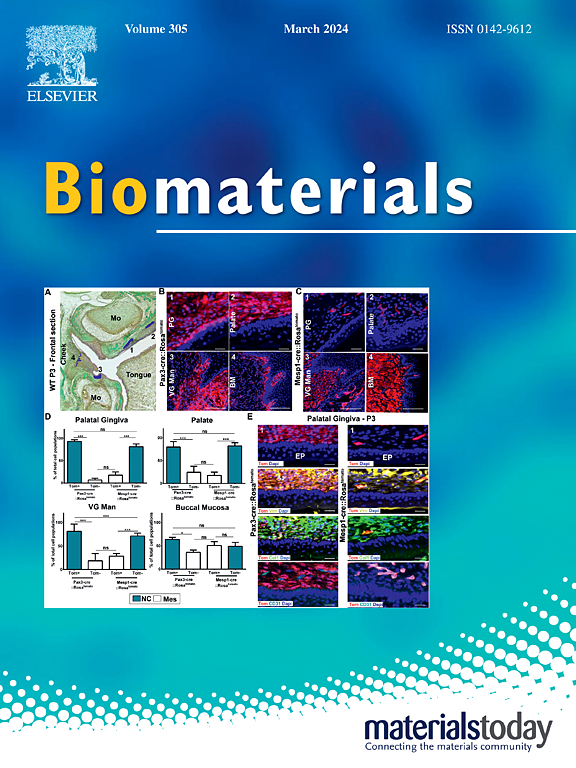Immunity/metabolism dual-regulation via an acidity-triggered bioorthogonal assembly nanoplatform enhances glioblastoma immunotherapy by targeting CXCL12/CXCR4 and adenosine-A2AR pathways
IF 12.8
1区 医学
Q1 ENGINEERING, BIOMEDICAL
引用次数: 0
Abstract
Blocking the C-X-C motif chemokine ligand-12/C-X-C motif chemokine receptor-4 (CXCL12/CXCR4) signal offers the potential to induce immunogenic cell death (ICD) and enhance immunotherapy of glioblastoma (GBM). However, traditional intracellular targeted delivery strategies and adenosine-mediated tumor immunosuppression limit its therapeutic efficacy. Herein, we present an acidity-triggered self-assembly nanoplatform based on bioorthogonal reaction to potentiate GBM immunotherapy through dual regulation of metabolism and immune pathways. AMD3100 (CXCR4 antagonist) and CPI-444 (adenosine 2A receptor inhibitor) were formulated into micelles, denoted as AMD@iNPDBCO and CPI@iNPN3, respectively. Upon administration, the pH-sensitive poly(2-azepane ethyl methacrylate) group of AMD@iNPDBCO responds to the acidic tumor microenvironment, exposing the DBCO moiety, resulting in highly efficient bioorthogonal reaction with azide group on CPI@iNPN3 to form large-sized aggregates, ensuring extracellular drug release. The combination of AMD3100 and CPI-444 contributes to ICD induction, dendritic cell maturation, and immunosuppressive milieu alleviation by reducing tumor-associated macrophages, myeloid-derived suppressor cells, and regulatory T cells, leading to a robust antitumor response, thereby significantly prolonging survival in orthotopic GBM-bearing mice. Furthermore, the nanoplatform remarkably amplifies immuno-radiotherapy by potently evoking cytotoxic CD8+ T cell priming, and synergized with immune checkpoint blockade by delaying CD8+ T cell exhaustion. Our work highlights the potential of the in situ assembly nanoplatform tailored for delivery of extracellular-targeted therapeutic agents for boosting GBM immunotherapy.
求助全文
约1分钟内获得全文
求助全文
来源期刊

Biomaterials
工程技术-材料科学:生物材料
CiteScore
26.00
自引率
2.90%
发文量
565
审稿时长
46 days
期刊介绍:
Biomaterials is an international journal covering the science and clinical application of biomaterials. A biomaterial is now defined as a substance that has been engineered to take a form which, alone or as part of a complex system, is used to direct, by control of interactions with components of living systems, the course of any therapeutic or diagnostic procedure. It is the aim of the journal to provide a peer-reviewed forum for the publication of original papers and authoritative review and opinion papers dealing with the most important issues facing the use of biomaterials in clinical practice. The scope of the journal covers the wide range of physical, biological and chemical sciences that underpin the design of biomaterials and the clinical disciplines in which they are used. These sciences include polymer synthesis and characterization, drug and gene vector design, the biology of the host response, immunology and toxicology and self assembly at the nanoscale. Clinical applications include the therapies of medical technology and regenerative medicine in all clinical disciplines, and diagnostic systems that reply on innovative contrast and sensing agents. The journal is relevant to areas such as cancer diagnosis and therapy, implantable devices, drug delivery systems, gene vectors, bionanotechnology and tissue engineering.
 求助内容:
求助内容: 应助结果提醒方式:
应助结果提醒方式:


